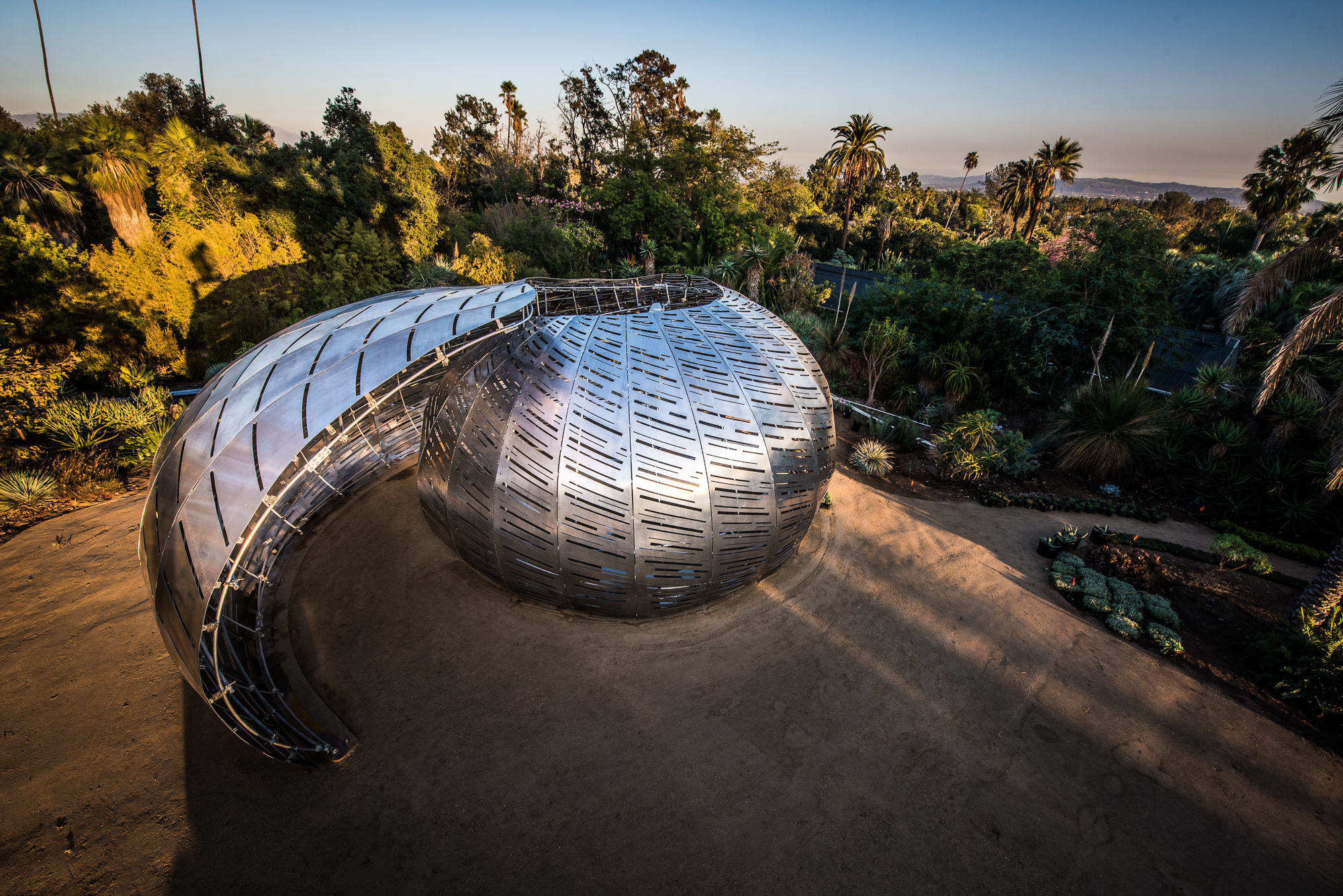
profile / alumni / graphic-design
August 24, 2017
Writer: Solvej Schou
Photographer: Juan Posada
Images: Courtesy of NASA/JPL-Caltech
AN OBJECT OF AWE: GRAPHIC DESIGN ALUM AND NASA JPL VISUAL STRATEGIST DAN GOODS BRINGS PASSION TO THE ORBIT PAVILION
When Graphic Design alumnus Dan Goods (BFA 2002) was 17, in his hometown of Salem, Oregon, he used to volunteer at a copy center, creating logos and printing out a newsletter. He was obsessed with fantasy football. He had never taken an art class, or even thought about being a designer. One day, a co-worker casually asked him, “Have you ever thought about going to art school?” Goods laughed.
Several years later, Goods found himself graduating valedictorian of his ArtCenter class and quickly snagging a job, in 2002, at NASA’s Jet Propulsion Laboratory in Pasadena as a visual strategist. Since then, the Altadena-based husband and father of three has headed up the research center’s aptly named “The Studio,” a team of artists and designers that includes fellow alum and visual strategist David Delgado (BFA 02 Advertising), who Goods calls “one of the great concept people I know.”
Their synergy and friendship—Delgado gave Goods a ride home on their first day at ArtCenter, after Goods lost his car keys—fuels JPL’s varied visual projects. Those projects range from 2014’s The Pulse floor-to-ceiling sculpture in JPL’s director’s lobby that uses dripping LED lights to show incoming and outgoing data from spacecraft to the glistening aluminum seashell-shaped outdoor installation the Orbit Pavilion, on display through September 3, 2018 at San Marino’s The Huntington Library, Art Collections and Botanical Gardens.

What I really enjoy doing is finding out what the essence is of something, and then finding a really creative way of communicating that.
Dan Goods

“I’ve always tried to be really open about what we do here, and be more of a creative adviser, whether it’s brainstorming future missions or helping scientists communicate what they want to do in the future,” says Goods, wearing a bright orange T-shirt and standing in The Studio—on JPL’s leafy hillside campus—surrounded by posters, concept drawings and a sign with his name and a picture of Star Wars Jedi Master Yoda.
“What I really enjoy doing is finding out what the essence is of something, and then finding a really creative way of communicating that,” he adds.
The essence and intention of the Orbit Pavilion, Goods says, is simple: to convey to the public that NASA—in addition to exploring far away galaxies—studies the Earth. Collaborating with composer Shane Myrbeck and architect Jason Klimoski of New York City-based StudioKCA, Goods and Delgado came up with a “soundscape” experience that encompasses the flow of NASA’s 19 Earth science satellites and the International Space Station. Satellites collect data on hurricanes, effects of the drought, the coral reef and more.
Visitors walk into the sculpture—located next to The Huntington’s 1919 café—and hear sounds interpreting each of the satellites’ missions swirling around them. The sounds fluctuate from a frog croaking to the crash of a wave or a human voice. The pavilion itself is made out of vertical sheets of metal with diagonal slats that let in light, and an opening at the top looking up and out onto the sky. The structure had to be 50 percent transparent so that the sound doesn’t bounce around “in weird ways,” says Goods.


“We want people to have a connection with this world that we can’t see, and for this to be a space that’s contemplative. It’s an object of wonder,” says Goods. “You go in and maybe close your eyes, and concentrate on the location of sounds. When you’re looking at too much stuff, you don’t focus on listening as much. It’s been beautiful to walk in there and see people with their eyes closed.”
Goods and Delgado first brainstormed the idea for the Orbit Pavilion, of having a space where people could hear the location of Earth satellites, back in 2005, after visiting one of the sites in NASA’s Deep Space Network, located in Goldstone, California. There, giant antennas communicate with spacecraft. At the same time, the area is quiet. Klimoski and StudioKCA came up with the concept of a giant seashell, similar to holding a seashell to one’s ear, and hearing rushing noises resembling the sound of the ocean.
The Orbit Pavilion debuted at New York City’s World Science Festival in May 2016. It came to The Huntington in October 2016.
“As a kid, I loved big ideas. Science is full of big ideas. But I was never someone who said, ‘I want to be an astronaut when I grow up,’ or imagined I can work at NASA,” says Goods. “I was fortunate. Literally the month I ran out of money, with a wife and a child, after graduating ArtCenter, I got my first paycheck from JPL. This is an amazing place.”

Related

video




